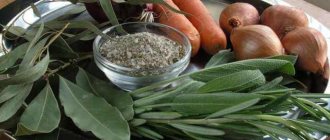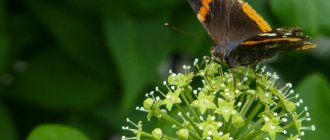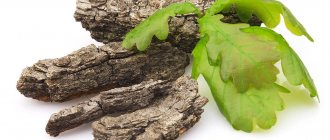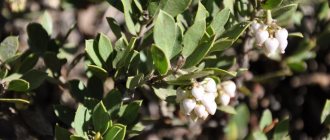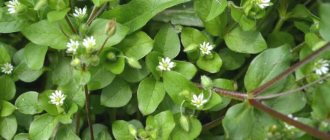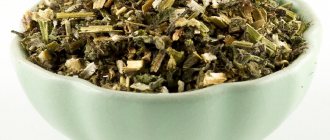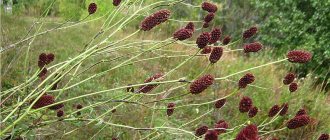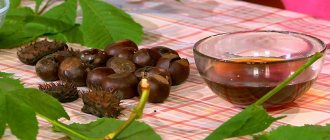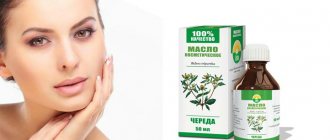Marsh wild rosemary (marsh rosemary, hemlock, forest rosemary, swamp stupor) is a perennial plant from the Ericaceae family, which has a special appearance and smell. People who are far from botany, who at least once see this plant, touch the specific leaves and smell it, will remember the puzzle for the rest of their lives and will no longer confuse it with another culture. It is poisonous and therefore requires care when collecting and preparing, as well as strict dosing when used for therapeutic purposes.
Holarctic species, mycotroph. It is characterized by a large range in Russia: it grows in the tundra, the European part, Siberia and the Far East. Grows in Ukraine, Belarus (especially in Polesie, where there are many swamps). Found in Alaska and Canada.
A typical place to see the plant is a moss bog, peat bog or swampy coniferous forest. Very often forms thickets, dominating other vegetation. A frequent “neighbor” of swamp stupor is blueberry, a useful and rare berry.
Today, the medicinal properties and contraindications of wild rosemary have been well studied, which makes it possible to use it in official and folk medicine, but strictly according to indications.
Morphological description
The evergreen swampweed is a shrub that reaches a height of 50-60 cm, sometimes it can grow more than 1 meter. The roots can grow to a depth of 30-40 cm. The shrub is erect: the stems are recumbent, rooting, and have a large number of ascending branches. The shoots are rusty tomentose. Old branches have bare bark of a grayish-brown color without edges.
The leaves are on short petioles, alternate, linear or oblong-elliptical in shape. Leaf length – 0.7-4 cm, width – 2-10 mm. The edge is slightly pointed or blunt. The leaves are quite dense, leathery, wrinkled, shiny with small glands on top and brown-felt underneath. The edge is solid, slightly turned downwards. Petioles are short.
The flowers are located on thin glandular stalks and reach a diameter of 8-10 mm. The color is white, sometimes reddish, the smell is strong, sometimes stupefying. Collected into shields or umbrella brushes of 16-25 pieces. The corolla is white, consists of 5 free elliptical petals and has a length of 5-7 mm. The calyx has 5 rounded teeth, small, remaining with the fruit. The sepals are brownish-pubescent, sticky, have a rounded shape with a ciliated edge. The stamens exceed the corolla in length (10 pieces). The filaments are expanded and pubescent at the base. The anthers open with holes. The pistil has an upper, five-locular ovary. The style is single, filiform, small, and has a five-lobed stigma. There is a nectar disc around the ovary.
Flowering occurs in May-July, and fruit ripening occurs in July-August. The fruit has a length of 3-8 mm and has the appearance of an oblong multi-seeded elliptical five-locular capsule, glandular. At the top there is a column. The stalks are long and curved downwards. When ripe, the box splits upward along the flaps. The seeds, approximately 1.5 mm long, are fusiform, small, flat, light yellow in color with wing-like membranous appendages at the ends. Propagated vegetatively and by seeds.
Chemical composition
All parts, except the root system, contain a lot of essential oil, which determines the specific smell. The oil contains sesquiterpene alcohols (up to 70%). The most significant are iceol, which can be used to obtain guaiazulene, as well as cymene, palustrol, and geranyl acetate. These alcohols have a balsamic odor and a bitter-burning taste, and are characterized by a pronounced expectorant and relaxing effect.
The highest content of essential oil is determined in first-year leaves (1.5-7.5%) and 2nd-year leaves (0.25-1.4%), flowers (2.3%). The branches of the second year contain up to 1.5% oil, and the branches and fruits contain about 0.2%.
The above-ground parts also contain:
- flavonoids . Substances of this group improve vascular tone, reduce the permeability of the vascular wall, and have a healing effect on the blood supply system, including small vessels;
- tannins . They have an astringent effect and help stop bleeding;
- arbutin . Glycoside with an antiseptic effect. Quickly and effectively suppresses the growth of pathogenic flora. It is considered the most effective against Staphylococcus aureus;
- neomertillin . A glycoside that has an insulin-like effect.
Various minerals, amino acids, vitamins, organic acids, and enzymes are found in small quantities in the plant.
The younger the shoots, the greater the concentration of nutrients observed in them.
Scientific research on wild rosemary
The earliest known mentions of the plant date back to the 12th century and are found in Danish herbariums. In Europe, swampweed was introduced into medicinal practice by Swedish doctors. The famous scientist Carl Linnaeus wrote an essay about the healing properties of the plant in 1775.
In folk medicine, this odorous healer has been used since the 16th century, especially in Sweden and Germany, where it was positioned as a remedy for various diseases of internal organs and skin.
It has been used in Russia since the 19th century, but was known to scientists much earlier.
- Thus, in 1496, Rauchfus K. A. was the first to obtain essential oil from the raw material of a plant and described that it consists of a crystalline and liquid part.
- In 1912, academician Krylov A.P. For the first time, the tactics of treating whooping cough with plant preparations was described.
- Later, in 1943, Professor Tatarov A.P. wrote about the rapid effect of wild rosemary on coughs accompanying acute bronchitis and bronchial asthma, which was proven in the treatment of patients during the Second World War.
- In 1945, Dyakov N.N. also described the beneficial properties that made it possible to use the plant for the treatment of bronchial asthma.
- For the first time, the structural formula of tricyclic sesquiterpene alcohol - iceol was proposed by N. P. Kiryalov in 1949. And the discovery of an antiallergic effect and a mild hypertensive effect made it possible to recommend wild rosemary to patients with cough syndrome who suffer from hypertension.
Soviet scientists wrote that even long-term use of swampweed does not cause an addictive effect. Therefore, its drugs can be used for several years, for example, as maintenance therapy for asthma, pulmonary tuberculosis and other chronic pathologies of the bronchopulmonary system in which cough occurs.
At the beginning of the 21st century, under the leadership of Professor Berezovskaya T.P., the first fundamental research of the plant was carried out on the basis of the Siberian Medical University: the pharmacological activity and high resource of bogwort as a biologically active substance were established.
In 2004, an experimental study of the antioxidant properties of an extract extracted from wild rosemary shoots collected in various parts of Russia from 1988 to 2003 was conducted at Tomsk Medical University. The study was conducted on white laboratory mice and found that the plant can be used to prevent the development of free radical processes in the human body, which lead to damage to cellular structures. The studied plant extracts showed pronounced antimutagenic activity, which once again proved the legitimacy of using the medicinal properties of wild rosemary as an antioxidant plant.
Medicinal properties
The medicinal properties of wild rosemary make up quite an impressive list. The rich polyphenolic fraction gives wild rosemary analgesic, anti-inflammatory, antimicrobial, antiviral, wound-healing, antifungal and insecticidal, diaphoretic potential, which is confirmed by research.
- The expectorant property of wild rosemary is successfully used in the treatment of cough.
- Ledum is good for the kidneys. It prevents the formation of kidney stones.
- Frees the liver from toxic substances and has the ability to regenerate liver cells.
- Relieves stress and is a good sleep aid.
- It has a mild laxative effect, but at the same time pacifies diarrhea.
- The anti-inflammatory property helps fight arthritis pain.
- It has long been used for dizziness, rheumatism and rashes.
- Ledum is one of the natural remedies with an abortifacient effect.
- To treat tuberculosis, a decoction of wild rosemary flowers is used.
Collection and preparation
The first thing to remember when going to collect swampweed is to be careful. You should wear gloves on your hands and protect your respiratory system with a respirator.
For further medicinal use, annual shoots with leaves and flowers, up to 10 cm long, are collected. The branches are cut off where the leaves begin to grow. Harvesting is done during the flowering period before the fruits are formed. It is believed that the blooming wild rosemary is the richest in chemical composition.
The branches are dried, tied into bundles, in a suspended state. You can dry it both in attics and verandas, and in the open air, but not in the scorching sun. In rainy weather, you can dry it in a dryer at temperatures up to 55°C.
Dries out about 3 times. The finished raw material has a sharp, resinous odor. Store it separately from other plants, out of the reach of children, in iron jars with lids.
Spreading
Marsh wild rosemary is resistant to frost. In nature, it grows in forests and tundra zones. The plant can be found in swampy coniferous forests, peat bogs, and birch forests. It is also found in river valleys and mountain forest belts. The shrub is able to grow on very poor and waterlogged soils.
Most often the culture is found in the north of the European part of Russia. It can also be seen in the Far East and Siberia. The shrub is widespread in the mountain-forest part of Eastern Altai. The culture is also found in Europe, Japan, and China. Swampwort also grows in North America.
Useful properties and indications
Ledum herb has a number of positive effects:
- bactericidal;
- disinfectant;
- antioxidant;
- tonic;
- antitussive;
- expectorant;
- hypotensive;
- diuretic;
- sweatshop;
- anti-inflammatory;
- antipruritic;
- anti-allergic.
Indications for the use of plant preparations are extensive. The most common of them are:
- laryngitis;
- acute and chronic bronchitis;
- whooping cough;
- pulmonary tuberculosis;
- hypertension;
- spastic enterocolitis;
- acute rhinitis;
- flu;
- diabetes;
- dysentery;
- rheumatic and gouty joint diseases;
- rheumatism;
- deforming arthrosis, polyarthritis;
- eczema, neurodermatitis, scrofulosis, rashes of various origins, lichen, insect bites;
- external bleeding;
- wounds, bruises.
It is most often used as an antitussive: it softens a painful cough, makes it productive, improves the discharge of sputum and its removal from the lower parts of the bronchial tree, relaxes the smooth muscle tissue of the bronchi.
Some unscrupulous traditional healers advise using strong decoctions of the plant to terminate an unwanted pregnancy. However, the opinion of doctors on this matter is categorical: this is unacceptable. Against the background of such stimulation of miscarriage, not only the embryo suffers, but also the mother’s body, which is subjected to severe intoxication, and its consequences may be irreversible.
Essential oil of wild rosemary
This is an effective folk remedy that is often used for respiratory pathologies. It eliminates asthma and bronchitis. The composition can also be used for prophylactic purposes.
Essential oil has a complex effect on the body and helps eliminate inflammation:
- treats cough, clears mucus from the bronchi, stimulating its elimination;
- relaxes smooth muscles and copes with spasms, which helps eliminate cramps;
- relieves inflammation, destroys Koch's bacillus, copes with the flu;
- has a hypotensive effect and promotes vasodilation.
Pharmaceutical preparations with wild rosemary
Official medicine has long paid attention to this poisonous but beneficial plant. In the pharmacy chains of Russia and post-Soviet countries you can buy the following preparations with swampweed:
- Ledin . Tablets based on sesquiterpene alcohol isolated from wild rosemary essential oil. It is used to suppress the cough reflex in case of bronchitis and other pulmonary diseases (acute and chronic), laryngitis, tracheitis.
- Shoots/grass of wild rosemary . Dry herbal raw materials, which are prescribed for bronchopulmonary diseases (acute and chronic), in which cough occurs.
- Ledum-GF . Homeopathic ointment for external use, characterized by analgesic and antipruritic effects. Indicated for pain accompanying joint diseases and itching after insect bites.
- Fitopril . A drug with a complex composition, a natural beta blocker. Used to prevent cardiovascular diseases (stroke, arrhythmia, angina, etc.)
Contraindications
The poisonous nature of this plant causes concern and gives rise to natural questions: can wild rosemary be drunk or brewed like tea without fear of consequences? Is it possible to give wild rosemary to children?
As a potent medicine, wild rosemary has contraindications.
- It is not advisable for children under 14 years of age to be treated with wild rosemary.
- Individual intolerance, expressed in the form of an allergic reaction, is a reason to look for alternative ways to solve health problems.
- Marsh wild rosemary increases the tone of the uterus and can cause miscarriage. Therefore, wild rosemary during pregnancy is a threat to the life and health of the fetus.
- If you have mental disorders, it is better to refrain from consuming wild rosemary. The reason is possible side effects.
- Hypotonic patients are also not recommended to use wild rosemary-based medications due to its hypotensive properties.
Treatment with wild rosemary should be started with small doses to ensure that there is no negative reaction of the body to its components.
The first signs of overdose or intolerance are dizziness and loss of coordination of movements, accompanied by cramps and nausea.
Recipes with wild rosemary
Many proven recipes help millions of people around the world in the treatment of certain pathologies. However, given the toxicity of the plant, you should consult a doctor before deciding on such treatment.
Decoction
Indicated for angina pectoris, tuberculosis, bronchitis, coughs, colds, inflammatory processes in the intestines. 1 tsp dry raw materials, pour 200 ml of water, boil for 1 minute, leave under the lid to steam for 30 minutes. Filter.
Drink 1 tbsp. 3 r/day. after meal.
To treat skin diseases, the broth is evaporated by half and warm vegetable oil is added to it 1:1, and the affected areas are lubricated with this mixture.
Water infusion
Indicated as a diuretic to calm the nervous system, as well as for asthma, tuberculosis, whooping cough, colds and coughs accompanying bronchopulmonary diseases, gout, rheumatism, shortness of breath, diabetes. Due to its high antioxidant and tonic activity, the infusion can be used to wipe aging skin instead of lotion. You can also apply a bandage soaked in the infusion to small wounds to stop bleeding.
For internal use: about 8 g. mix dry raw materials with 400 ml of boiling water and wait 15 minutes, filter. Take 2 tbsp. per day in small portions.
For internal use - cold infusion method, less concentrated infusion: 1 tsp. raw materials pour 400 ml of boiled water (cold), cover and leave for 8-10 hours. Filter. Take three times a day, half a glass.
For external use: 12 gr. dry raw materials, pour boiling water (250 ml) and steam for 20 minutes, strain. Use for arthrosis, eczema, rheumatism for rubbing and compresses.
Infusion (ancient recipe)
Indicated as a diaphoretic, and also helps with rheumatism, gout, weeping eczema, flu, and runny nose. Take 20 gr. dry raw materials and pour 1000 ml of boiling water, place in the oven (temperature ~ 50 C) for 10 hours, strain.
Take 1/3 cup after meals 4 times a day.
Alcohol tincture
Take 1 part of the dry raw material and add 5 parts of alcohol or 40% vodka, leave in a warm place for 24 hours.
Apply externally for rubbing for arthritis, rheumatism, radiculitis, for lotions for gout.
Cold drops
Take 100 ml of vegetable oil and mix with 1 tbsp. dry raw materials, leave in the dark for 3 weeks, shaking the mixture daily. Afterwards, strain and squeeze the raw materials.
Instill 2-3 drops into each nostril at once, and then 1 drop, multiplicity 3-4 times a day.
Rosemary oil (cold method)
Indicated for lubrication for skin diseases (eczema, etc.). Take 2 tbsp. l. dry raw materials pour 4 tbsp. vegetable oil, leave in a warm place for 12 hours, filter.
Rosemary oil (hot method)
Indicated for treating insect bites, wounds, bruises, rubbing for arthritis and radiculitis. Take 3 tbsp. vegetable oil and mix with 3 tbsp. dry raw materials, put in the oven or oven for infusion.
Ointment for joint diseases
Take a ceramic pan and place wild rosemary grass into it in layers, then fat (goose, pork), alternating them until the container is full. Close the lid tightly and cover the edges with dough. Place the pan in the oven at 100°C for 2-3 hours. Strain the finished product and put it in the refrigerator (the ointment takes on a semi-solid form).
Rub the joints 2-3 times a day.
Medicinal preparations with wild rosemary
Tea for colds, coughs, rheumatism, bronchial asthma
Take 20 gr. swamp grass and 10 gr. nettle leaves, pour 1000 ml of boiling water and wait 12 hours.
Take 100 ml 3-4 times a day. When treating whooping cough, drink 1 tsp. up to 5 times a day.
Collection for chronic bronchitis
Take 2 tbsp. oregano, 1 tbsp. nettle leaves and birch buds, 4 tbsp. wild rosemary 2 tbsp. Pour 2 liters of boiling water over the mixture, boil over low heat for 10 minutes, leave for 60 minutes, strain.
Drink a third of a glass 3 times a day. after meal.
Dysentery collection
Take 10 g. swampweed, mixed with 20 gr. marshmallow root and pour 1 liter of boiling water. Wait 1 hour, strain.
Take 1 tbsp. every 2 hours.
Remedy for acute bronchitis
Take 2 tbsp. puzzle, chamomile, coltsfoot, 1 tbsp. birch leaves and oregano, mix. To 2 tbsp. take 500 ml of boiling water and boil for 10 minutes, then leave for another half hour covered.
Take a third of a glass 3 times a day. after meal.
Collection for asthma
Shift: 200 gr. wild rosemary herbs and chamomile flowers, 60 gr. birch buds, 40 gr. ephedra, chop everything. Take 2 tbsp. mixture, add 500 ml of boiling water to it, leave for 6 hours and filter.
Take half a glass warm 3 times a day. before meals.
Collection for dry cough and hard to clear sputum
Take 5 tbsp. wild rosemary, add 10 tbsp. coltsfoot and marshmallow roots. 2 tsp add the mixture to 1 liter of boiling water, leave for 5 minutes on low heat, leave for half an hour.
Take half a glass before meals, 5 times a day.
Collection for hypertension and obesity
Take 3 tbsp. l. motherwort, the same amount of marshweed, add 2 tbsp. l. wild rosemary and 1 tbsp. l. horsetail and buckthorn bark, mix. To 2 tbsp. add 500 ml of boiling water to the plant mixture, boil for 10 minutes and leave for another half hour.
Take a third of a glass after meals, 3 times a day.
Collection for polyarthritis
Take 2 tbsp. wild rosemary, chamomile, string and plantain, add 1 tbsp. lingonberry leaves and juniper berries, mix. 2 tbsp. mix the raw materials with 500 ml of boiling water, leave for 6 hours, strain.
Take half a glass 3 times a day.
Ointment for scabies
Take 150 gr. wild rosemary and 150 gr. white hellebore (roots), add 500 g to the raw materials. pork fat, place in a water bath for 6 hours, strain and cool.
Lubricate the affected and healthy skin adjacent to the tick localization area 2-3 times a day.
Other uses of the plant
- In everyday life, dry leaves can be used as a natural insecticide, fumigating rooms with them or spraying the decoction in places where flies, mosquitoes, bedbugs, and cockroaches accumulate.
- Powder from the plant or dry twigs help get rid of moths: they are used to arrange clothes or hang bunches in the closet.
- Essential oil mixed with tar is used for tanning leather, in perfumery, textile industry, and soap making.
- Previously, they tried to use bogwort instead of hops in brewing (counterfeit). However, the drink was too intoxicating, causing delirium, headache and dizziness, abdominal pain, and colic.
- It is a good honey plant, but the honey on it becomes poisonous, so it should not be eaten. Such honey can only be used by bees for the development of the colony. For this reason, it is impossible to collect and eat untested honey from wild bees, since it is not known from what plants it was obtained.
- It is used in veterinary medicine to treat domestic animals: pigs, cows, horses with epidemic diseases, colic, poisoning.
“Somewhere wild rosemary is blooming on the hills, cedars are piercing the sky...” - these are the words from a song that was once popular and loved by many. But does anyone think about the confusion in the names of plants that occurred in this lyrical song? In fact, the song is about a beautifully flowering shrub - Rhododendron dauricum L., which in Siberia and the Far East is popularly called wild rosemary.
Marsh rosemary. Photo by O. Mitrofanov
The name “Ledum” has become so firmly established in everyday life there that one can often find the phrases: “Rhododendron Daurian, or Rosemary Roseum...Siberian...Far Eastern, etc.” In the explanatory dictionary of S.I. Ozhegov gives a precise and correct definition of wild rosemary: 1) An evergreen shrub of the heather family with an intoxicating odor, growing in peat bogs. 2) The popular name of a shrub plant with delicate lilac-pink flowers - one of the types of rhododendron.”
It should be noted that in Western literature, some authors have included all species of the genus Ledum in the genus Rhododendron since the 1990s, but in Russian-language untranslated literature such a view on the classification of this genus is not supported to date. According to the website of the Group of Phylogeny of Angiosperms, in the modern classification the genus Ledum remains independent and includes 8 species, 4 of which are distributed in Russia. The most widespread representative of the Ledum genus in nature is the marsh Ledum, which will be discussed in our material.
Marsh rosemary (lat. Ledum palustre L.) belongs to the heather family (lat. Ericaceae). It is a strongly branched evergreen shrub, 50 to 120 cm high, with erect shoots covered with thick “rusty” felt abscission. The diameter of the bush in adulthood is about 1 meter. The leaves are lanceolate, dark, shiny, fragrant. The edges of the leaves are strongly curled down. The flowers (up to 1.5 cm in diameter) are white, less often pinkish, pungently scented, in multi-flowered umbels. The capsule fruit opens with five doors. The seeds ripen in mid-August. The roots are superficial. All parts of the plant are poisonous! The leaves and branches of wild rosemary (and especially flowers, pollen and seeds) emit a sharp, specific intoxicating odor, which in large quantities has an adverse effect on humans in the form of developing dizziness, headaches, and nausea. This is due to the complex essential oil content in the plant.
Interesting fact: In the old days, rural innkeepers often infused wild rosemary into moonshine in order to intoxicate the client and extract more money from him. Ledum is a moisture-loving, frost-resistant, light-loving plant, but it can also grow in partial shade and grows slowly. Like all heathers, wild rosemary is a mycorrhizal plant whose symbiont fungi require acidic soil (“mycorrhiza” is a fragile formation consisting of hyphae of fungi and plant roots; mycorrhizal formations on plant roots are characterized by the presence of a continuous cover of mycelium at the tips of the roots ).
The homeland of wild rosemary is the Arctic, East European Plain, Western and Eastern Siberia, Western, Northern, Southern Europe, Northern Mongolia, Northeast China, Korea, North America. Distribution area - Arctic, northern zone and northern regions of the temperate zone of Eurasia and North America. On the territory of Russia, the species has a very large range, covering the tundra and forest zones of the European part, Siberia and the Far East. Wild rosemary grows in the tundra and forest-tundra on peat bogs, in high bogs, in the undergrowth of damp coniferous forests, along mountain rivers and streams, in the highlands, in groups, in small thickets, among dwarf cedar trees. Despite the vast Holarctic range of wild rosemary, its largest reserves are concentrated in Siberia. In many regions of the European part of Russia, wild rosemary is included in the Red Books (Voronezh, Lipetsk, Penza, Tula, Ulyanovsk regions, Moscow, as well as the Republics of Bashkortostan and Tatarstan).
The origin of the Latin name of the plant Ledum has several versions: according to one version, the name of the genus was borrowed by Linnaeus from Dioscorides, who called another genus by the name “ledon” - cistus, which secretes an aromatic resin - incense, similar in smell to the essential oils secreted by wild rosemary. According to another version, the name comes from the Latin word “laedere”, which means “to harm, torment”, due to the strong suffocating odor that causes dizziness. The Russian name of the plant Ledum comes from the Old Slavonic “bagulit”, that is, “to poison”, for the toxicity of all parts of the plant. The specific name of the plant, palustris, is translated from Latin as “marsh” and is associated with the place where it grows. Ledum has many popular names: bagun, bagula, bagunnyak, bogovnik, bagunnik, bugun, marsh hemlock, golovolom, bagno (“low, swampy place”), oregano, oregano, canalweed, marsh ditch, large bug grass, bug grass, marsh grass stupor, forest rosemary. All these popular names accurately reflect the essence of this most interesting and useful plant: poisonous and healing at the same time.
Plants have always played an important role in the life of people. There are many beautiful stories associated with them. Every tree, shrub, and flower had its own history, and very ancient history turned into a legend.
Marsh wild rosemary in the vicinity of the lake. Kampyurku. Photo. Oleg Mirofanov
There are many legends and tales about the wonderful wild rosemary. One myth about wild rosemary is associated with a mysterious swamp snake that lives in the taiga of Pomerania and appears when wild rosemary is set on fire. The snake appeared at the intoxicating smell of the plant and absorbed all the aromas of Ledum's smoke. And if the snake came across a sick person, the snake could wrap itself in rings around the person and drive the disease out of him. There is a legend about wild rosemary, which tells about the Lord of the Swamp, who fell in love with a beautiful forest nymph, but she laughingly rejected his advances. One day, having received another refusal from the beautiful nymph, the ruler became angry, went berserk and began to destroy everything around. From a random spark, the swamp caught fire, and the smoke from the burnt wild rosemary was carried by the wind to the forest where the nymph lived and stupefied her head. Following the smell of smoke, she came to the swamp itself, where the Swamp Lord lured her. Since then, it has been believed that if there is fog in the swamp, it means that the nymph, having sobered up, is trying to escape from the ruler, and he creates fog so that she gets lost. And if the swamps are burning, it means that the nymph has run away from the ruler, and he is desperately trying to lure her back to him. According to another legend about wild rosemary, the plant is named after Leda, the wife of the Spartan king, with whom Zeus fell in love - for the beauty and intoxicating smell of the flowers. Perhaps it was under the influence of these odors that people endowed wild rosemary with magical properties. The most active people here are the peoples of the north, for whom wild rosemary is held in special esteem. According to ancient northern beliefs, the bright smell of wild rosemary drives away evil spirits. Therefore, it was widely used by shamans, developing the gift of clairvoyance and trying to enter a trance. They drank wild rosemary infusion before and during the rituals, and inhaled the smoke of burning branches. A special smoker made from wild rosemary was a mandatory attribute of a shaman, along with a tambourine, a belt and a suit. It is believed that such smoke affects not only the psyche of the shaman, but also of others present during the ritual, and promotes communication with spirits and the transition of consciousness to another dimension. Ledum was also widely used by healers who prepared various love potions using this plant. Ledum infusions were also used by witches to get rid of unnecessary pregnancy. In popular beliefs, wild rosemary is credited with many magical properties. In some places it was believed that with its help one could inflict madness and evoke an evil spirit, while in others wild rosemary was considered one of the most effective love potions. Thus, in Carpathian legends it is depicted as a strong love spell. In the Far East there is an ancient belief, vaguely similar to the legend about the fern, that wild rosemary is a magical bush that can talk and knows all the secrets, including where treasures are buried. On a full moon, he can reveal his secret and lead him to the treasure. But he did not show the treasure to everyone, but only to a virgin who would let down her hair and bring him some milk or honey. In the symbolic language of plants, wild rosemary flowers symbolize courage and disregard for death. For centuries, it was believed that wild rosemary strengthens memory and clarity of mind, elevates mood, and protects against evil influences from outside and evil thoughts within.
Despite its poisonous properties, wild rosemary is still a medicinal plant. Since wild rosemary is a plant of the north, it was not known to the ancient world, but since the early Middle Ages it has been mentioned as a medicinal plant in Danish and German herbalists. Since ancient times, diseases of the liver and kidneys, heart and lungs were treated with a decoction of wild rosemary. For the first time, Swedish doctors introduced wild rosemary into European medical practice - there, a decoction of flowers and young shoots of the plant was used to treat gout, bronchitis, dysentery, and skin diseases. The medicinal properties of wild rosemary were described back in the 18th century by the outstanding biologist Carl Linnaeus. Ledum is also mentioned in old Russian herbal books - they said that this remedy is “very powerful, cancer-healing, it quenches pain and breaks up tumors.” In the East Slavic region, wild rosemary has been used as a medicine since the 18th century - early Russian scientists called it “stinking heather.” At this time, a book called “On the Benefits of Stinking Heather” was even published in Russia. Among the people, wild rosemary is a favorite drug; it has long been considered a panacea, used for almost all diseases, and during any epidemics, wild rosemary tea was always drunk for prevention. Different nations have their own peculiarities of using wild rosemary: in the Komi Republic wild rosemary is used to treat excessive addiction to strong drinks; a tincture from the plant is added to the drink, so a person develops an aversion to alcohol. In Transbaikalia and Siberia, tar is made from wild rosemary, which is used to treat eczema by mixing it with sour cream. Ledum is also used in other countries. For example, in France, plant extract is added to ointments and gels against skin diseases. In Bulgaria, hot tincture of wild rosemary flowers is very popular; it is used to treat cholecystitis. The Indians of North America use wild rosemary as a spice, soaking meat in a decoction of its shoots, drinking a heady infusion of rosemary and chewing its fresh leaves. It is not at all surprising that wild rosemary is a very popular medicinal plant, since its composition is unique. All organs contain a large amount of tannins, organic acids, vitamins, the glycoside arbutin, and flavonoids. The main component of wild rosemary is the essential oil, which includes ledol, palustrol, cymene, geranyl acetate and other components that have a bitter-pungent taste and balsamic odor. The largest amount of essential oil is contained in young leaves during the flowering phase of the plant. Essential oil is an effective medicine that helps with cramps, relieves inflammation and increases the resistance of gastric tissues, actively relieves spasms, and is a good cure for the runny nose. Ledum oil ointment is prescribed to treat wounds and burns; it also soothes skin itching due to insect bites.
Interesting fact: The chemical composition of wild rosemary and in particular the content of its main active ingredient - iceol in the essential oil, have pronounced chemical variability depending on the area of growth. The qualitative composition of the wild rosemary essential oil samples collected in Europe is practically the same, while the Siberian and Far Eastern populations are heterogeneous in the composition of essential oils.
In official medicine, wild rosemary herb is used for enterocolitis, in the form of tinctures it is used for diseases of the respiratory system in acute and chronic bronchitis as a vasodilator, a cough softener (antitussive drug “Ledin”, “Chest collection No. 4”), as a diuretic, disinfectant and antiseptic . Ledum preparations are used for diabetes, rheumatism, jaundice (but, due to the fact that the plant contains toxic substances, treatment with products based on wild rosemary must be agreed with a doctor, since the plant can cause great harm to the body, and in no case case, its dosage should not be exceeded). Ledum is also used in veterinary practice, in particular, it is added to animal feed for epidemic diseases. By the way, despite its toxicity, wild rosemary in the tundra and taiga serves as a significant aid for the nutrition of wild reindeer, but poisoning has been reported in domestic goats and sheep after eating this plant. Decoction, infusion, powder, smoke of wild rosemary is a proven remedy for exterminating mosquitoes, moths and bedbugs, as well as for expelling annoying rodents. Together with tar, essential oil from wild rosemary can be used in leather processing; it can be used in soap making and perfumery, as well as in the textile industry as a fixative. All types of wild rosemary are good honey plants and produce a small harvest of honey, but wild rosemary honey is poisonous (the so-called “drunk” honey), it cannot be eaten without boiling. It can only be used by the bees themselves for the development of families.
Ledum has been introduced into culture since the middle of the 18th century. The first mention of this genus in the catalogs of the Botanical Garden of St. Petersburg dates back to 1736 and, possibly, records the growth of Ledum palustre L. in the territory of the Apothecary Garden in a wild state. This species is very difficult to cultivate, but with the right approach it can be used for decorative purposes in heather parks and gardens. Lives in culture for more than 30 years.
In the Altai Nature Reserve, wild rosemary is a common species in the lower part of the high-mountain belt. Rarely found in the black and forest-steppe belts. It grows in almost all floristic areas of the reserve, except Yazulinsky, at altitudes of 700-2300 m above sea level. The species is not found in the vicinity of the Baigazan cordon.
https://ru.wikipedia.org/wiki/%D0%91%D0%B0%D0%B3%D1%83%D0%BB%D1%8C%D0%BD%D0%B8%D0%BA https: //www.earthflora.ru/syurprizy-bagulnika.html https://ozonit.ru/elr/bagulnik/bagulnik_istoriya.php https://urok.1sept.ru/%D1%81%D1%82%D0%B0 %D1%82%D1%8C%D0%B8/644970/ https://myphs.jimdo.com/2015/03/08/%D0%B1%D0%B0%D0%B3%D1%83%D0% BB%D1%8C%D0%BD%D0%B8%D0%BA/ https://www.svprim.ru/travnik/ledum.shtml https://shkolazhizni.ru/plants/articles/74284/ https:/ /ogorodniki.com/article/kak-ispolzuiut-bagulnik-v-meditsine-poleznye-svoistva-bagulnika
Material prepared by: researcher at the Altai Nature Reserve Miroslava Sakhnevich
